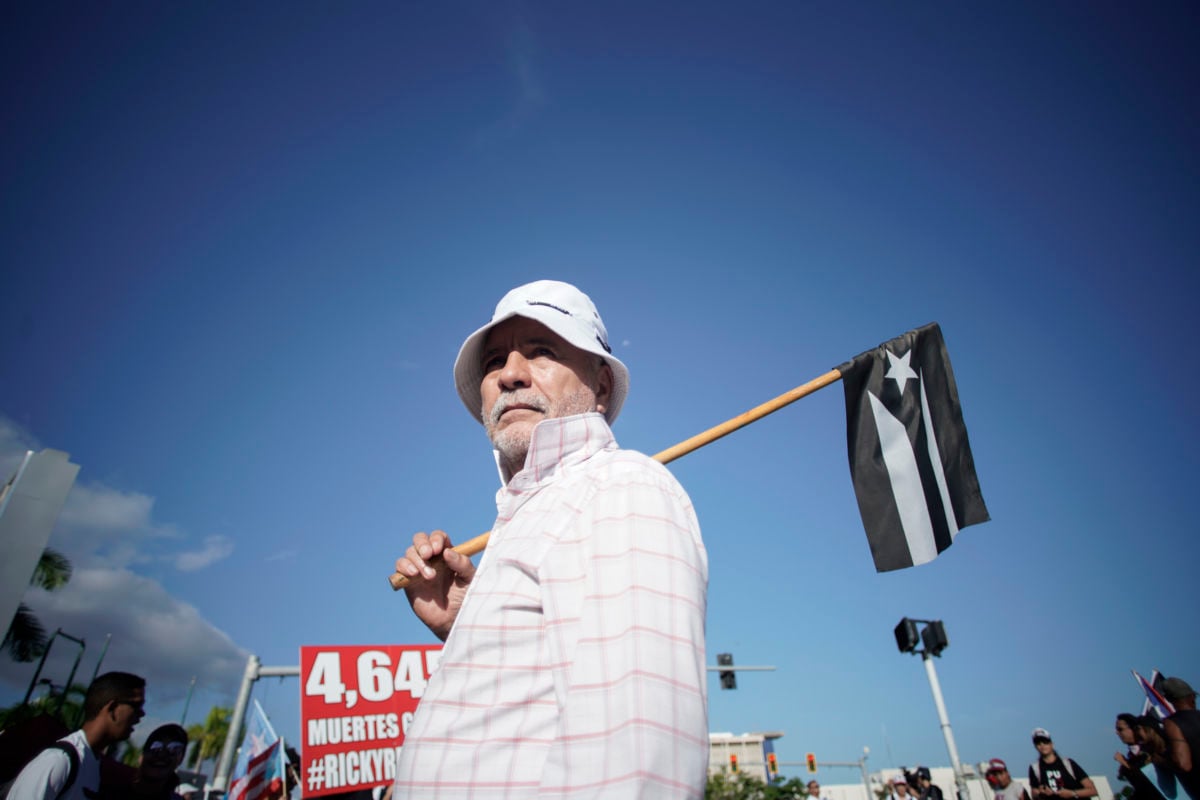Part of the Series
Covering Climate Now
Two years ago today, I was in my house, waiting. In fact, the entire island of Puerto Rico, after days of stocking up on bottled water and food, was waiting. As Hurricane Maria pummeled Puerto Rico, all we could do was wait it out. Thousands of people died as a result of the hurricane, either directly or indirectly. Many of us, the survivors, lived for months without access to clean water, electricity, cell phone service or passable roads in our communities. The federal government response was botched. Yet, despite shredded infrastructure and few government resources, many rural communities went immediately from waiting out the storm to full-throttle action, using whatever means they had available and doing everything in their power to help their communities with emergency response.
Just weeks after Hurricane Dorian ripped through the Bahamas, we are seeing a similar pattern: waiting, devastation, desperation, frustration at the government response, and dependence on local responses to fill the void. On the Abaco Islands, where migrant farmworkers from Haiti and other low-income communities attempted to wait out the storm, supplies are now hard to come by. With every passing day, the death toll rises. As communities with few financial resources mount their responses, who will reach those in rural communities who are fully cut off from the towns and cities? Who is tracking locals suffering from chronic diseases, to assure they still have access to the medicine they need and appropriate foods? When mega-storms rip out infrastructure and community health centers, local organizations, friends and neighbors step up to these tasks.
And mega-storms are on the rise. The climate crisis brings catastrophic storms like Hurricane Dorian, which was one of the strongest hurricanes on record, and which increased its devastation by moving painfully slowly, resulting in extreme rainfall. Those two traits — higher winds and slower movement — are the hallmarks of climate change-fueled hurricanes. There have been five Category 5 hurricanes in the last four years. Atlantic communities must be prepared for this new normal.
Preparation is most effective when it comes from the local community. The role of community in emergency management is highlighted in the General Services Administration’s National Response Framework and in the Federal Emergency Management Administration’s related trainings. In essence, both agencies present the importance of the “bottom-up” approach when developing capabilities for emergency management, specifically referencing the historical failures of nationwide programs when communities are not involved and community networking does not happen.
The climate crisis isn’t going away. Even with significant global action, we are still locked in for serious climate repercussions — particularly among the most vulnerable. It’s an emergency disaster in slow motion.
During the past year and a half, I have led a project through Migrant Clinicians Network in collaboration with two community health centers in Puerto Rico. Both centers identified, based on their experiences after Maria, vulnerable and hard-to-reach communities. Our community teams and health centers in Puerto Rico worked together to build community-level responses to future emergencies, where we identified barriers — such as the absence of nearby shelters, a lack of adequate places to store supplies, economical disadvantages to invest in preparedness and resources to handle incidents once the community is cut off from communication — that could affect community capacity to prepare and respond to disasters. This model also informed communities on their vulnerability to climate-related disasters. But preparedness is not enough. While we prepare at the local level, we must simultaneously pressure our political leaders to take action.
As climate change barrels forward, intensifying disasters that otherwise might have been kept at bay, battering communities in its path, our political leaders bear responsibility for the lack of functional policy to effectively address the climate crisis and slow down the global, far-reaching and terrifying consequences of it. Immediate federal and global action is imperative.
Our community mobilization work cannot end with just preparing for disaster. We must transfer these skills toward stopping the climate crisis. Once a community develops and strengthens its skills to identify needs and resources, it can focus on targeting those elements that are increasing the risk of suffering from climate-related disasters. Essentially, education and advocacy skills should provide the means, and hopefully the will, to hold policy makers accountable. Policy makers must assign resources and establish achievable measures to begin our path to adapt, mitigate and remediate climate change. Public pressure needs to center those of us who are at higher risk of experiencing dramatic impacts on our lives, the ones whose lives and properties are more vulnerable and will not be able to relocate or survive easily.
It is necessary to challenge our legislative and executive system to serve our communities and protect them. That’s why I am joining millions of people worldwide on this week of climate action, from September 20 to 27, including this Saturday’s climate march in San Juan, Puerto Rico, to demand swift global action.
I spent my time waiting, bracing for the worst, as disaster struck. I am done waiting. Now, it’s time for action. On this two-year anniversary of Hurricane Maria, which will be marked as the United Nations opens its climate summit, tens of thousands of Americans will strike to demand immediate and bold climate action.
This story is part of Covering Climate Now, a global collaboration of more than 220 news outlets to strengthen coverage of the climate story
Join us in defending the truth before it’s too late
The future of independent journalism is uncertain, and the consequences of losing it are too grave to ignore. To ensure Truthout remains safe, strong, and free, we need to raise $27,000 in the next 24 hours. Every dollar raised goes directly toward the costs of producing news you can trust.
Please give what you can — because by supporting us with a tax-deductible donation, you’re not just preserving a source of news, you’re helping to safeguard what’s left of our democracy.
